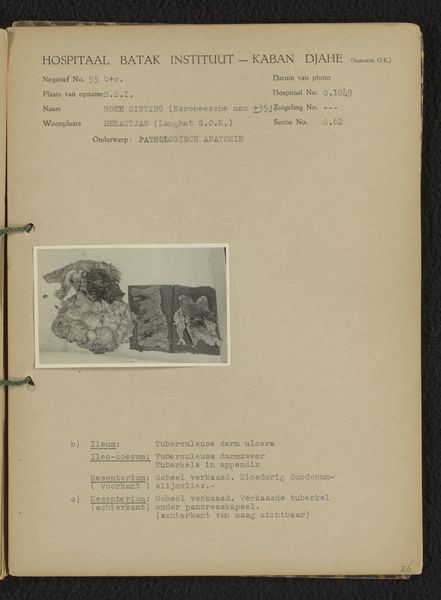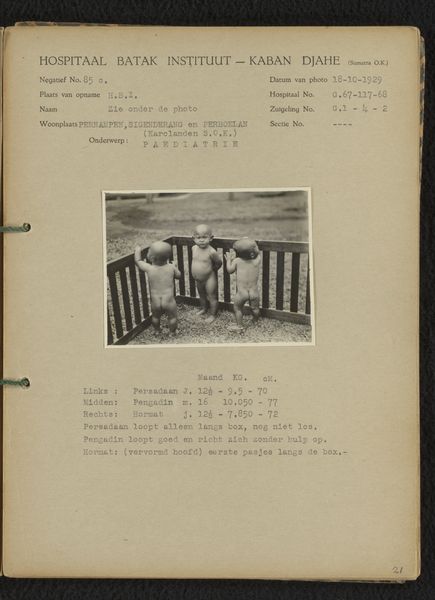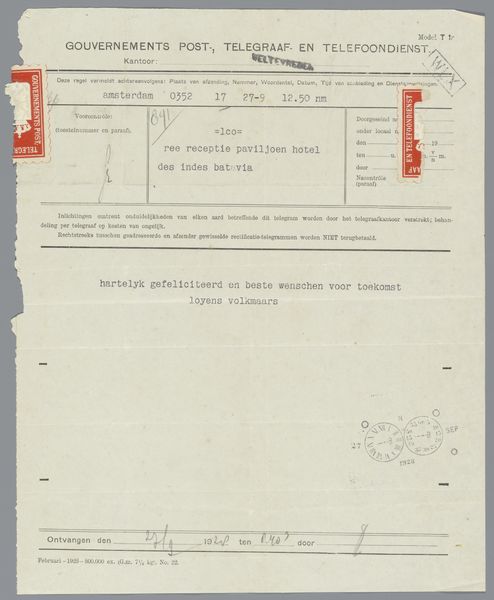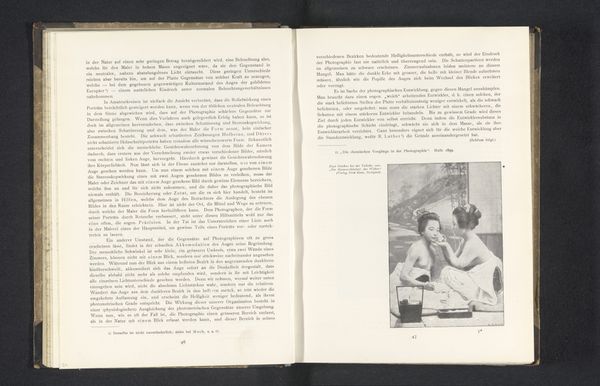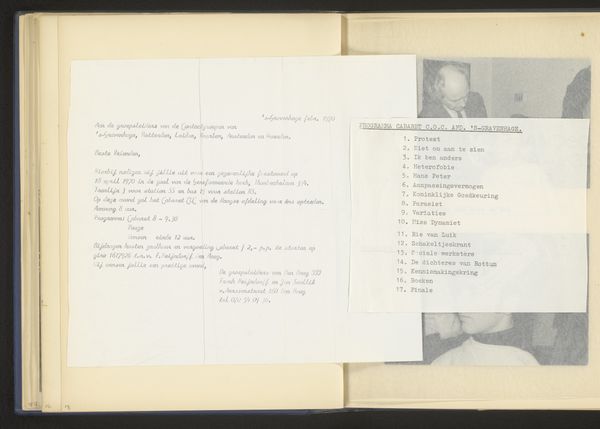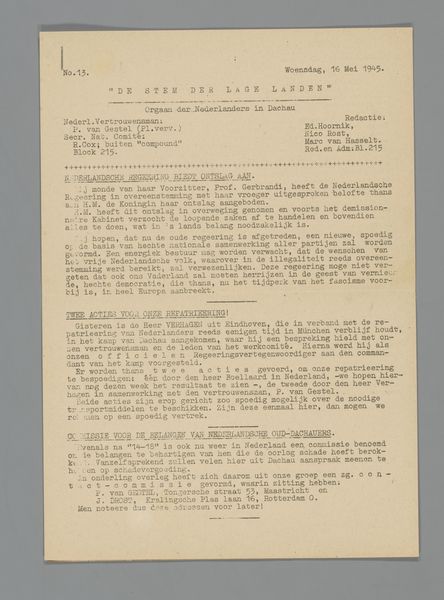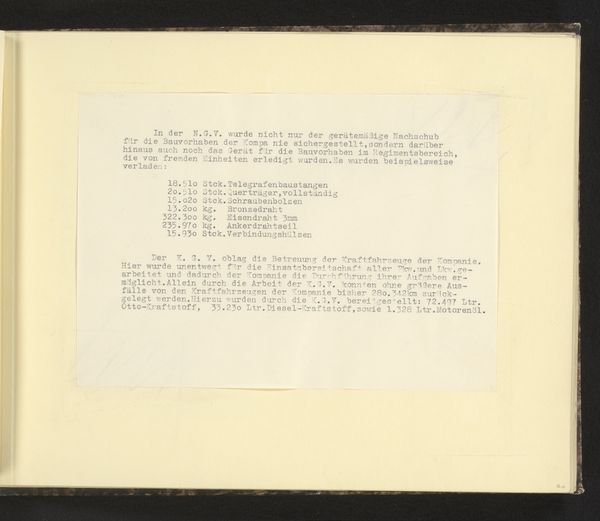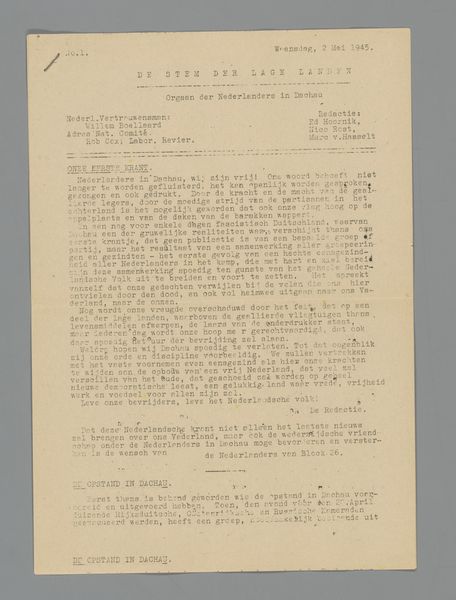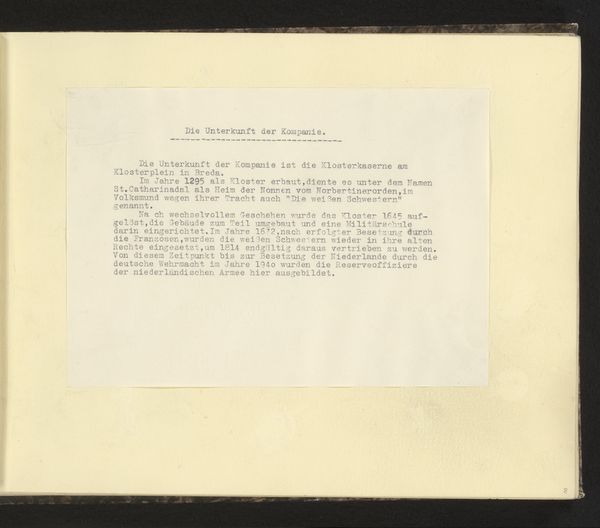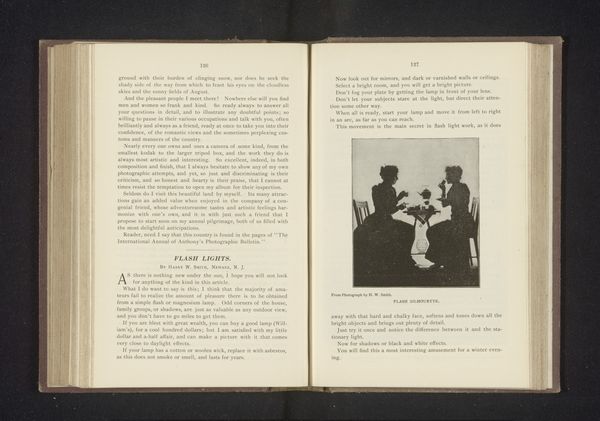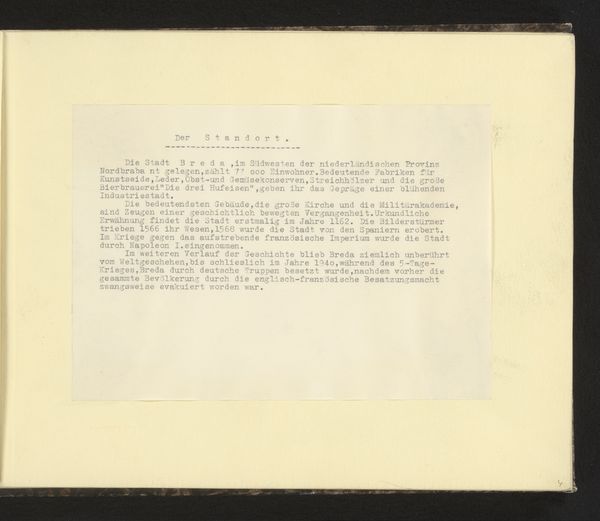
print, photography
#
portrait
#
african-art
# print
#
photography
#
modernism
Dimensions: height 62 mm, width 100 mm, height 280 mm, width 210 mm
Copyright: Rijks Museum: Open Domain
Curator: Today we're looking at a photograph titled "Drie blinde kinderen," or "Three Blind Children," taken in 1929 at the Hospitaal Batak Instituut. It's a striking, small, black-and-white print, likely documenting patients. Editor: My first thought is how deeply sad this image is. The children's expressions... their vulnerability is palpable. Even the framing, placed as it is on what seems to be a ledger page, creates a clinical, detached feeling that amplifies the emotional weight. Curator: Precisely. The photograph itself functions as both an evidentiary record and a form of what could be termed primitive medical advertising. The stark contrast between the children's states of health, explicitly written in Dutch, and the staged appearance really highlights a brutal colonial-era objectification. Editor: This raises so many ethical questions about representation and power. Who authorized this photograph? What were the circumstances surrounding its creation? The caption clearly indicates the children's ailments, stripping them of any agency. Also the term, "africain-art", seems entirely misapplied; I want to know how it was catalogued? Curator: Exactly! This wasn’t just a photograph; it was a tool for a very particular colonial agenda. We need to look into what was circulated with this photograph, the medical establishment, the network that produced these images, and how it played into colonial projects, both medical and administrative. The work exists in this intersection of documenting disease but it also uses those medical conditions in terms of consumption and spectatorship, ultimately to promote these western projects, even at the expense of their subject. Editor: Agreed. This photo becomes a lens through which we examine the historical power dynamics and the instrumentalization of vulnerable subjects. It forces us to confront difficult histories and consider our own roles as viewers and interpreters. We must contextualize the children as victims in a society controlled by a medicalized regime imposed by another system to scrutinize who had the capacity of defining, recording and preserving memory and knowledge. Curator: It also underscores how critical it is to approach such images with critical awareness, always questioning the purpose, the narrative, and who is truly served by it. Editor: Absolutely. Let’s not forget those faces of “Drie blinde kinderen”, hopefully sparking conversations to bring necessary transformation and respect into healthcare in today’s world.
Comments
No comments
Be the first to comment and join the conversation on the ultimate creative platform.
